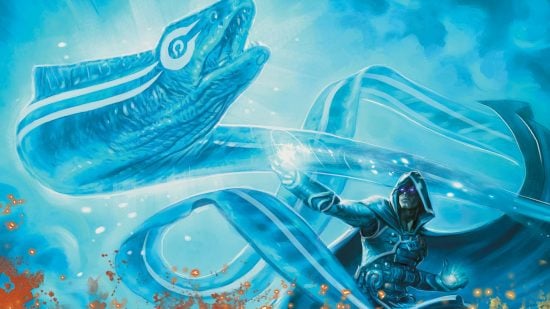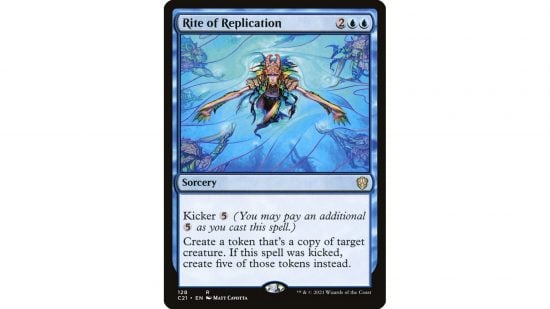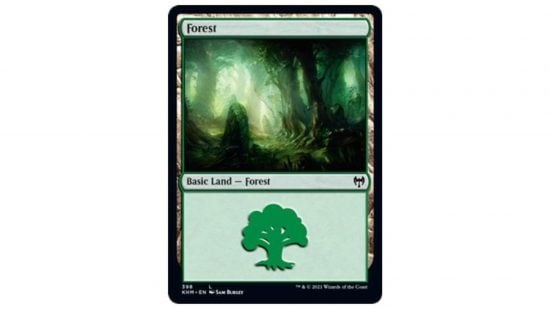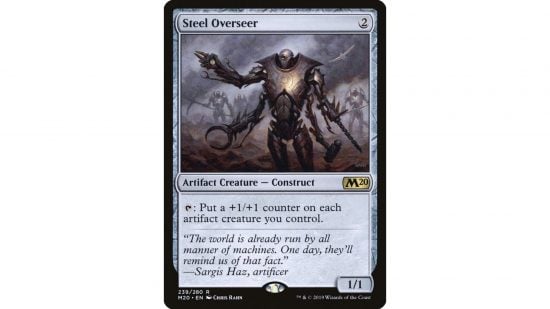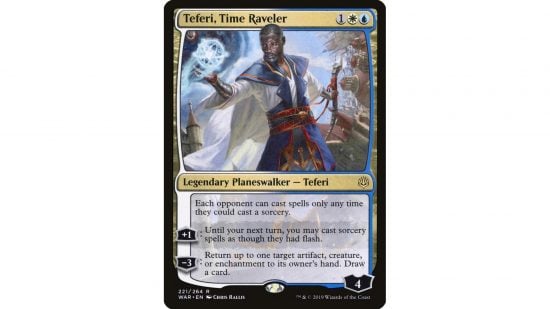Before you play your first game of Magic: The Gathering, it helps to know the main types of MTG card. There are eight MTG card types in total, each one representing a different aspect of the game. This ranges from the monsters that do your fighting for you, to the equipment they wield, to the mana that allows you to pay for it all.
Whether you’re a beginner still learning how to play Magic: The Gathering and discovering the different MTG colors, or a more experienced player in need of a quick recap as you build an MTG deck, this guide will fill you in quickly on all the MTG card types.
The eight MTG card types are:
- Sorceries
- Instants
- Lands
- Creatures
- Artifacts
- Enchantments
- Planeswalkers
- Battles
Sorceries
Sorceries (and also Instants) represent magical effects you can cast, like a fireball or a summoning spell. While most card types stay on the battlefield (these are known as permanents) sorceries go to your graveyard as soon as their effect is resolved.
Most MTG card types are cast at what is known as ‘Sorcery speed’. This means you can only cast them on your turn, during one of your two main phases, and only when there are no effects currently on the MTG Stack (about to resolve). The main exception is…
Instants
Instants, like Sorceries, represent one-time-use magical spells that go to your graveyard after they take effect. However, unlike Sorceries, Instants can be cast whenever you have priority, even on other players’ turns. You can therefore use Instants to catch your opponent unawares, buffing your Creatures during combat or using one of the many MTG counterspells on their turn.
While typically only Instants can be cast at Instant-speed, some MTG cards have activated abilities you can use. Unless these specify otherwise, these abilities can also be used whenever you have priority.
Lands
Lands represent the locations you control, and which you draw magical energy (mana) from. Most MTG Lands tap to gain you mana, which you’ll use to pay for all your other spells.
Lands are unique because they are ‘played’ but not ‘cast’. They are permanents when they’re on the board, but aren’t considered spells, and never go on the Stack. Lands don’t cost any mana, but you can usually only play one a turn, and like other MTG card types, you can only play them at Sorcery speed.
Creatures
Creatures are the warriors you’ll typically use to damage your opponent and ultimately win the game. There are many different kinds, from scurrying MTG Goblins to enormous, powerful MTG Elder Dragons. Each Creature has a power representing how much damage it does in combat, and a toughness representing how much damage it takes to destroy it. Creatures are used in combat and can attack and block.
Artifacts
Artifacts represent items and constructs. There are many different types, from Equipment like swords and shields that you can outfit your Creatures with, to MTG Vehicles that can become Creatures when they are crewed. Many Artifacts are also Creatures and the vast majority of them are colourless. There aren’t any major rules that are unique to Artifacts, but many cards care about the number of Artifacts you control, or can only target Artifact permanents.
Enchantments
Enchantments represent magical effects that, unlike Instants and Sorceries, stick around on the battlefield after you cast them. Most have ongoing effects or activated abilities that you can use. Some Enchantments are Auras, which have to be cast on another permanent, to alter it in some way.
Like Artifacts, there are plenty of cards that can only target Enchantments or synergise with this MTG card type.
Planeswalkers
One of the more complicated MTG card types, and until recently, also the newest. MTG Planeswalkers represent the main heroes and villains of Magic: The Gathering, the superpowered beings who can hop from plane to plane.
Each Planeswalker has a starting loyalty count, and on your turn you can use one of its loyalty abilities, either taking counters away or adding them before resolving the relevant effect. These abilities can only be used at Sorcery speed, but because the active player gets priority after a card enters the battlefield – you’re pretty much guaranteed to be able to use of them before anyone can stop you.
Planeswalkers can be attacked like players. When combat begins, you have to decide which of your attackers are aiming at a player and which are going for the Planeswalker. Damage removes loyalty equal to the amount done (you can effectively think of it as health). Once a Planeswalker has no loyalty left it goes to the graveyard.
Battles
The newest, youngest MTG card type, Battles represent major conflicts and fights. They’re double sided cards that can transform. Currently only one type of Battle card exists: The Siege. Sieges generally have an effect when they are cast, and then their owner picks a player to defend them and take control of them.
Sieges have defence counters that work just like loyalty, and can be attacked just like Planeswalkers. When a Siege is defeated, it is exiled, and its owner gets to play the reverse side (which could be a Creature, Artifact, or some other MTG card type) for free at Instant speed.
